| Address: | Mandhata, Omkareshwar, Madhya Pradesh 451115 |
|---|---|
| How to go: | The nearest airport is Devi Ahilyabai Holkar International Airport in Indore. Omkareshwar New Bus Stand, or Mandhata, is 82 km away via the Khandwa-Indore Highway. One can hire a taxi from the airport, which costs around ₹1500. Sarwate Bus Stand is 8 km from the airport, and buses to Omkareshwar New Bus Stand are readily available. Omkareshwar Road Railway Station (OM) is located approximately 12 km away. Another major nearby railway station is Indore Junction, about 77 km from Omkareshwar, which is well-connected to major Indian cities. |
| Pros: | Small city but holds the greatest religious value, connectivity, market.Value of money |
| Cons: | Lack of hotels for daily basis food in or around and quality of existing hotels. (I will strongly recommend Brahmin Bhojnalaya) |
| What to visit ? |
|
| Company: | Solo, family, friends |
| Minimum day/time to visit: | 2 days full (Including all nearby spot) |
| Locality: | Urban |
| Expenses: | Max 5000 for a solo traveller including stay and food and everything for 2 days. Journey is separate. |
| More Information: | The story began at Indore Airport during Navaratri. For your information, the official name of Indore Airport is Devi Ahilyabai Holkar International Airport. From there, I had to reach the Omkareshwar Temple, which is 86 km away via the Indore-Ichapur Highway. Omkareshwar Jyotirling Omkareshwar is the fourth Jyotirlinga among the twelve, located in the Khandwa district of Madhya Pradesh. It is situated on an island called Mandhata, where the holy river Narmada flows around it. There are two gates to enter the temple. The west gate can be accessed via the Omkareshwar footbridge or the Koti Tirtha Ghat, while the east gate is accessible via the Mamleshwar bridge. Let us talk about Omkareshwar Jyotirlinga and how it was formed. I was talking about Mandhata Island, right? It is also called Shivpuri, where Raja Mandhata meditated to attain Lord Shiva. Let me tell you, Mandhata was one of the 14 forefathers of Lord Ram, and the island is named after him. But how is it related to the Jyotirlinga, right? After his meditation was completed, Lord Shiva, pleased with his devotion, appeared in the form of a Linga made of soil. That is why it is called a Swayambhu Linga, meaning it formed on its own. Lord Shiva then asked Raja Mandhata what blessing he desired. Raja Mandhata did not ask for anything for himself but prayed for Lord Shiva to reside on the island forever. That is how the Omkareshwar Jyotirlinga was formed on that island. Let me also tell you, the Omkareshwar Jyotirlinga has five faces. Due to its resemblance to the shape of the sacred word "Om," the island is also named Om Parvat. If you enter through the eastern gate, you will pass by a Shani Dev shrine on the right, and on the left, you will walk parallel to the VIP queue. While in the queue, you can see the main shrine, Shri Omkareshwar Mahadev, on an LCD screen. I suggest taking the normal queue to better observe the temple's curvature and intricate stone art. Once you come out of the Garbhagriha, take a left and go upstairs to visit the Mahakaleshwar temple. Generally, that part of the temple is less crowded, so you can sit there peacefully to pray or meditate. Observe the beautiful stonework on the pillars and the main gate of the Garbhagriha. Most people miss these two small but very important temples, but I suggest that when you visit any big temple, explore everything. Once you enter through the western gate, on the left near the barricades, you will see a passage that leads to the Batuk Bhairav and Pataleshwar Mahadev temples. Please visit them. After some research, I came to understand that the Narmada Aarti is not performed in a grand manner every day. It is conducted on special occasions. On other days, you can witness the Narmada Aarti at Sree Ram Ghat and Gaumukh Ghat at 6:30 PM. The timing varies with the seasons. For those who do not know about the 12 Jyotirlingas in India, you can get the information here once you exit the Garbhagriha of the Omkareshwar Jyotirlinga temple. There is an interesting fact about the Sayana Aarti in this temple. The gates for darshan are closed at 9:30 PM, and the live darshan display is stopped. At that time, preparations begin for Mahadev's day-end rituals. The Sayana Aarti then starts around 10:00 PM. It is believed that every night, Shiva and Parvati come to play Chausar and rest until 3 a.m. at the Omkareshwar temple. Then, early in the morning, they leave for Ujjain to attend the Bhasma Aarti. One thing to remember here is that no one is allowed to watch the Sayana Aarti from inside the garbhagriha of the Omkareshwar temple. People stay outside and catch a glimpse of it. After the Aarti, the gates are reopened for 10 minutes to allow devotees who wish to see the Chausar court arranged inside. The temple is then closed for the day. Surprisingly, every morning, the pieces on the Chausar board are found jumbled up, though devotees are not allowed to witness this directly. Mamleshwar Jyotirling In the morning, the market area gave me good vibes, and I was about to reach Mamleshwar Jyotirlinga. Let us talk about Amleshwar or Mamleshwar Jyotirlinga. You might be wondering, is there another Jyotirlinga in Omkareshwar? Yes, you heard me right. When Adi Guru Shankaracharya came to Om Parvat, he realized that during the monsoon, the water level of the Narmada River rises, creating difficulties for devotees who wish to reach the Omkareshwar Jyotirlinga, which is situated on an island. To address this issue, he consecrated another Jyotirlinga on the other side of the Narmada River, ensuring that people could access it easily during the monsoon without having to cross the river. This Jyotirlinga is called Mamleshwar Jyotirlinga. Essentially, Omkareshwar and Mamleshwar together form the Omkareshwar Jyotirlinga. This is why, when you visit Omkareshwar, it is considered a complete pilgrimage only if you visit both Jyotirlingas. Isn't that a beautiful fact? Another story behind the formation of Mamleshwar Jyotirlinga is that Vindhya, the Vindhyachal mountain range passing through Madhya Pradesh, performed intense penance to Lord Shiva to become superior to all other mountains. Vindhya is also mentioned in our National Anthem. Witnessing this severe penance, the gods and sages prayed to Lord Shiva to remain present in the Vindhya region. Lord Shiva accepted their request, and as a result, the Omkarlinga located here is divided into two forms. The Sadashiva, who exists under the Pranava (Om), is known as Omkar. Similarly, the Jyoti revered in the Parthiva murti is called Parmeshwar or Amaleshwar Jyotirlinga, which is now known as Mamleshwar Jyotirlinga. Here, every small temple offers a unique vibe that can connect with your inner soul when you spend time alone. You will feel as if nothing is bothering you; a sense of inner peace will take over, allowing you to focus on everything around you. After going there, I came to know that this is the Kashi Vishwanath Temple. Here, the sevaks are rotated and stay behind the temple. I was fortunate enough to receive prasad after speaking with one of them for a while. After spending enough time at the temple, I headed towards the skywalk and explored Gaumukh Ghat. Next, I visited the Dattatreya Temple, which is situated beside the Mamleshwar Temple. It is also a very old and peaceful temple. My heart melted when I saw an elderly person reciting the Sundara Kanda of the Ramayana. I also noticed the sculptures carved on the walls. Then, I went inside the garbhagriha and visited the Shiva Linga. From afar, this Vishnu temple attracted me greatly because of its architecture. The decorations of the temple were simple yet elegant, and the location was breathtaking. Inside, you can see idols of Vishnu and Mata Lakshmi. Being a small town, finding food might be challenging, especially for those planning to stay in Omkareshwar. I would recommend Brahmin Bhojanalaya as the best option. Do give it a try. I noticed that sculptures were intricately carved on the walls. Then I entered the garbhagriha and visited the Shiva Linga. Narmada parikrama Narmada Parikrama is one of the holiest pilgrimages, where devotees cover a 7 km clockwise route starting from the Omkareshwar temple to the Omkareshwar Jyotirling for darshan and Jal Abhishekam. As you may know, the Narmada is considered one of the holiest rivers in India and is often compared to the Ganga in terms of its spiritual significance. It is also regarded as the lifeline of Madhya Pradesh. While some believe that both the Kaveri and Narmada rivers flow on either side of the region, I prefer to rely on geography, which confirms that only the Kaveri flows around. Returning to the main topic, I wanted to share why the Narmada River is so important to the people of Madhya Pradesh. According to the Puranas, there is a story behind the formation of the Narmada River. It is said that Lord Shiva and Mata Sati once longed to perform a pilgrimage in the region. During their journey, a drop of Shiva's sweat fell at Amarkantak, situated in the Anuppur district of Madhya Pradesh. From that drop of sweat, the Narmada River was formed, and people worship her as Maa Narmada. Lord Shiva also considers her his daughter and gave her the name Narmada. This is one of the few rivers in India that flows in the opposite direction, from east to west. It is also said that Maa Narmada remained unmarried throughout her life. Pilgrims observe a ritual called Narmada Parikrama, where they complete a circumambulation of the river and collect its water to perform Jal Abhishekam at Omkareshwar after returning from their journey. The Kedareshwar Temple was built by the Parmar rulers in the 13th century AD. Once you reach this temple, take a moment to sit on the temple grounds or beneath the neem tree, or you can meditate. Feel the divine vibes surrounding this sacred place. Not many people perform the Parikrama here, so it is generally peaceful. Along the way, you will encounter plenty of monkeys, birds, cows, goats, and squirrels. If you have food, you can feed them. You will also find water pots placed for pilgrims. On the way, you will discover a variety of unique temples, some unlike any you’ll find elsewhere. For instance, I came across a Gayatri Mata temple, which I had never seen before. After about an hour, I finally reached the confluence of the rivers, which filled me with a sense of peace. Moving ahead, I visited the Dwarkadish Rinmukteshwar Mahadev Temple. This temple is located near Dharmrajdwar, part of the fortifications built by the Parmar rulers in the 13th century AD to protect their dynasty. Dharmrajdwar served as the western gateway of the Mandhata Fort, which was constructed using red sandstone. As I proceeded, I reflected on Ramdev Baba, a Hindu deity revered in Gujarat, Rajasthan, and the Malwa region of Madhya Pradesh. He belonged to a Rajput family from Pokhran and dedicated his life to uplifting the poor. I began the Parikrama a bit late, around noon. The sun was directly overhead, and the weather was quite hot, but it didn’t bother me much. The path has its own unique energy, with the serene Maa Narmada flowing beside you, keeping you motivated to walk. Next, I encountered one of the most remarkable temples on the Parikrama route—the Gauri Somnath Temple. Upon reaching it, the weather suddenly changed, and all my fatigue vanished. This temple, built during the Parmar period in the 10th–11th century AD, is a three-story Pancharatna-style temple constructed in the Bhumij architectural style. At its base is a massive Jalhari Shivalinga made of black granite. It is believed that the Shivalinga was originally white and had a mystical power through which one could see their future. However, Aurangzeb, one of the destroyers of Mandhata, became curious to see his fate in the Shivalinga’s reflection. When he saw a pig, he became enraged and ordered the Shivalinga to be thrown into fire. Since then, the Shivalinga has turned black and lost its power. The temple was renovated in the 16th century AD, and its Shikhar was added during the Maratha period. Behind the main shrine, there are three dev kulikas (minor shrines). In the central shrine, a four-handed Gauri is depicted. In her left rear hand, she holds a lotus stalk with Ganesha seated atop it, and in her right rear hand, another lotus stalk with Lord Shiva is seated. The other two hands are broken. The other two kulikas house depictions of Paricharikas and Shiva as a Dwarpal. I also explored the temple’s upper floors, each of which has a Shivalinga. Be cautious while climbing the stairs as they are steep. Moving ahead, I visited the Patali Hanuman temple, where Hanumanji is depicted lying on a bed. The next stop was the Raj Rajeshwari Mandir. Opposite it is a Shiva temple where photography is not allowed, but it is worth visiting. Inside, you will find shrines of Shiva-Parvati in the center, Badri Narayan on the left, and Ganesha on the right. Earlier in my journey, I mentioned a Shiva statue visible from the pool, where I could see the Jata (locks of hair). This is that same Shiva statue, located atop the temple. Visiting the Raj Rajeshwari Temple, I saw a large Shivalinga, along with idols of Ram, Lakshman, Sita, Hanumanji, and Raj Rajeshwari Mata. On the way out, you’ll see Maa Narmada and Hanumanji. Finally, I reached the 106-foot Adi Shankaracharya statue. After that, I visited another set of famous fortifications on Mandhata Island, called Chand Suraj Dwar. This monument is now protected under the Ancient Monuments and Archaeological Sites Act. Interesting sculptures on this gate include Maa Chamundeshwari with 20 arms and Mahishasura Mardini on the left, as well as Ganesha on the right. Further along the Parikrama route is the Siddhanath Shiva Temple, built in the Brahminic and Indo-Nagara architectural styles. The intricate carvings throughout the temple are mesmerizing. The central Shiva shrine, accessible from all four directions, categorizes it as Sarvatobhadra architecture. The absence of a Shikhara, roof, and other components indicates the damage it suffered during Mahmud Ghazni’s invasion. Despite this, the temple stands tall, a testament to its resilience. The Parikrama concludes at the final gate of the fortifications, known as Bheem-Arjun Dwar, leading toward the Omkareshwar Jyotirlinga Temple. This was the eastern gateway of the fort. That concludes my journey of the Narmada Parikrama at Om Parvat. I tried to cover most of the temples, though I missed a few. Hopefully, you’ll explore those on your visit. With this, I conclude this part of the series. Boat riding at Narmada River At the end of my trip, I finally managed to ride a boat in the holy Narmada. I boarded it from Gaumukh Ghat. There were already six passengers on board, but they were expecting a few more. Once I joined, they started taking us to the eastern Sangam of the Narmada. As the boat started, I felt the refreshing breeze pass by, and all my tiredness disappeared. Soon, we reached the Sangam, from where we could see the Omkareshwar Barrage ahead. I could not take a bath, but I simply sat there chanting "Mahadev." I observed the pilgrims around me and captured many beautiful moments in my mind. We returned after 30 minutes, passing by the Brahmapuri Ghat suspension bridge, Gaumukh Ghat, Parikrama Marg, graffiti wall, and finally, the stunning view of the Omkareshwar Jyotirlinga temple. Finally, they took us to the Koti Tirtha Ghat, from where you can easily go to the temple. During the day, from the Mahakaleshwar temple, you can get a view of the Mamleshwar temple from afar. Also, you will love the sight of Maa Narmada from this vantage point. |






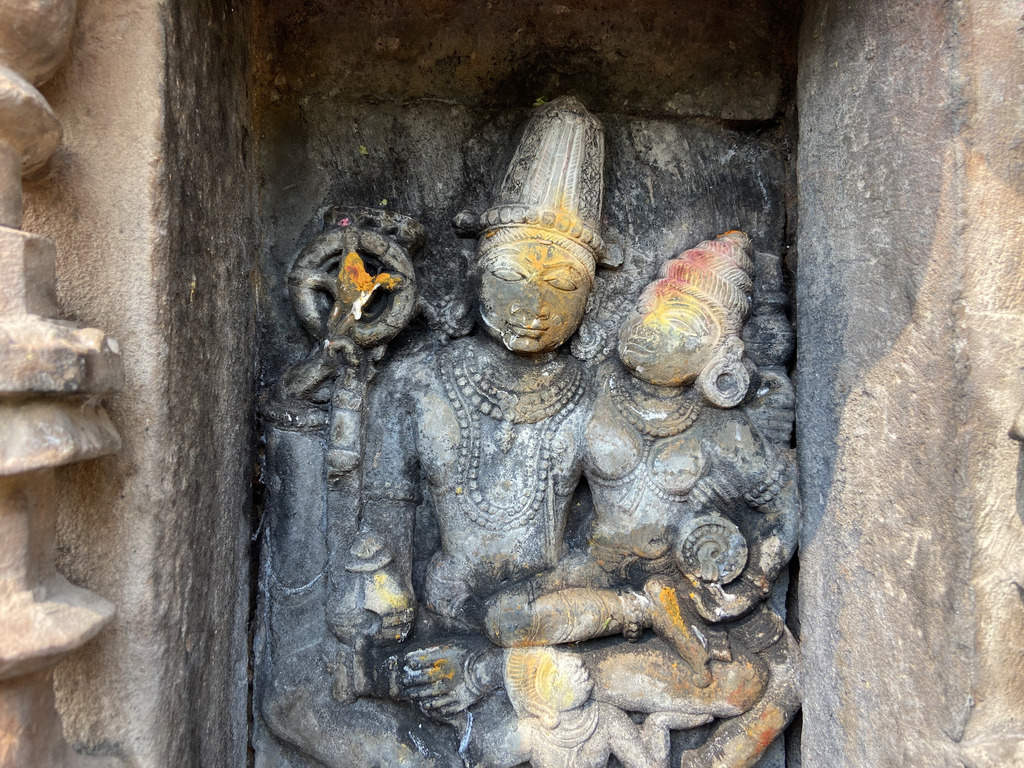














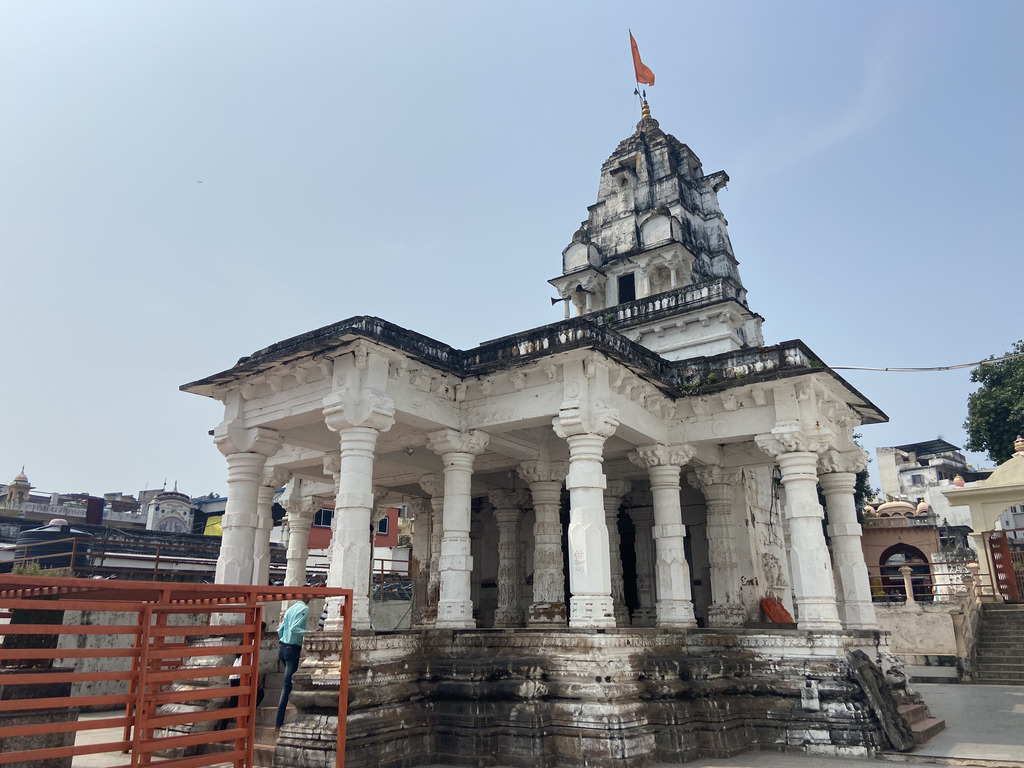





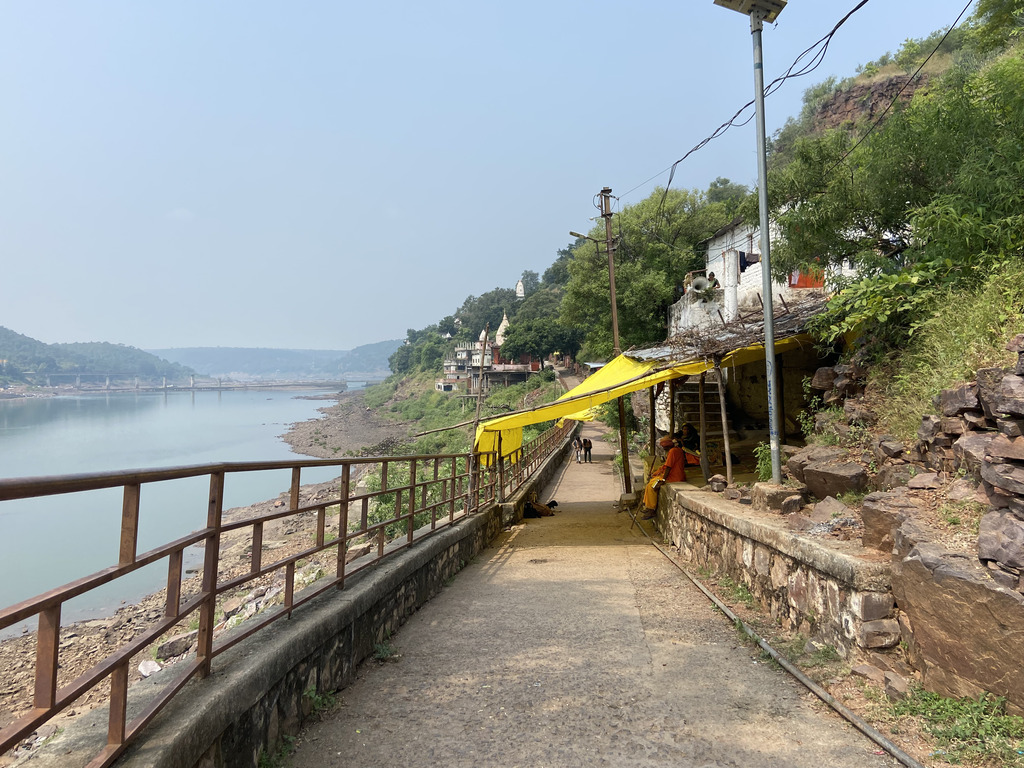























































































































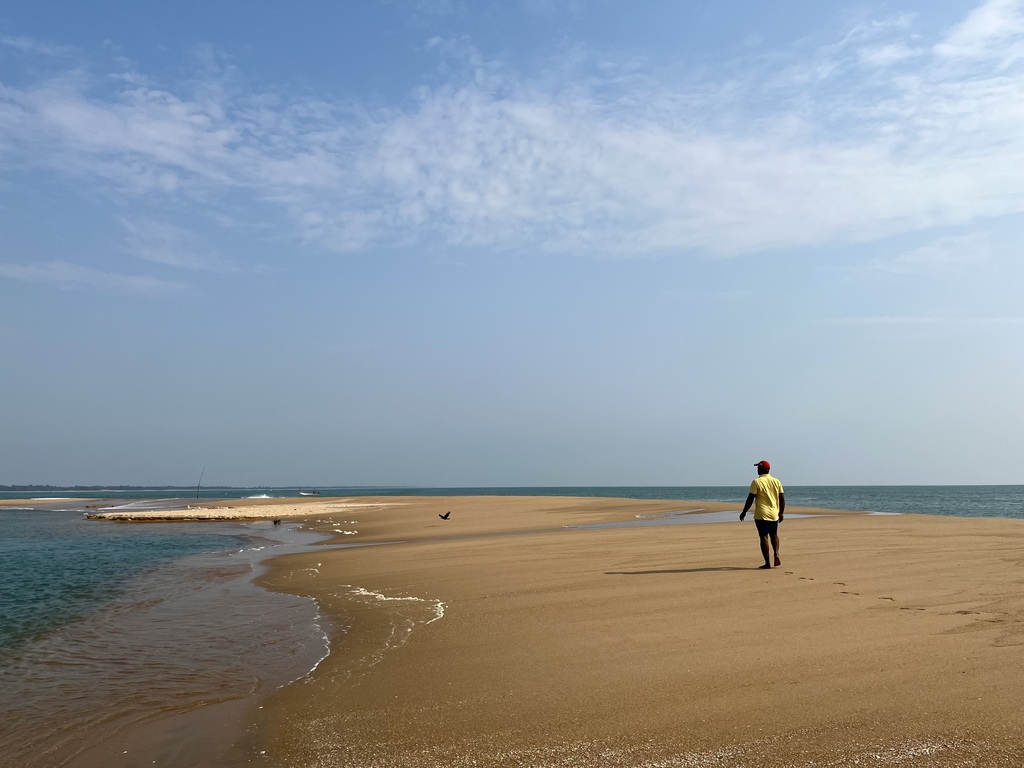
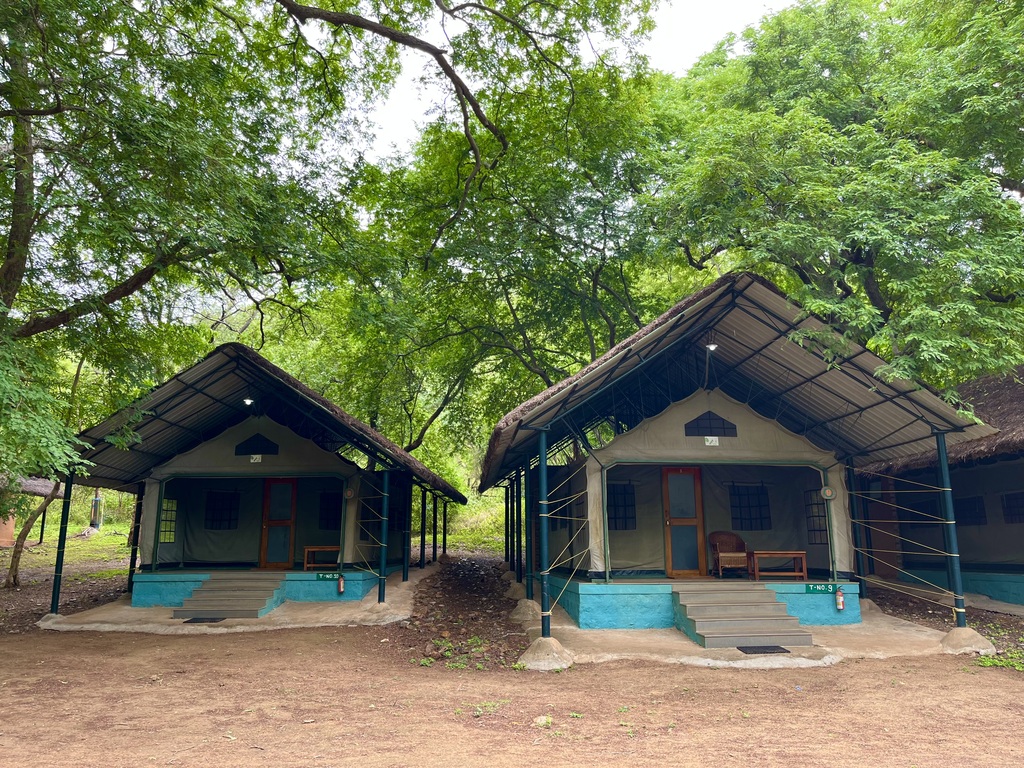
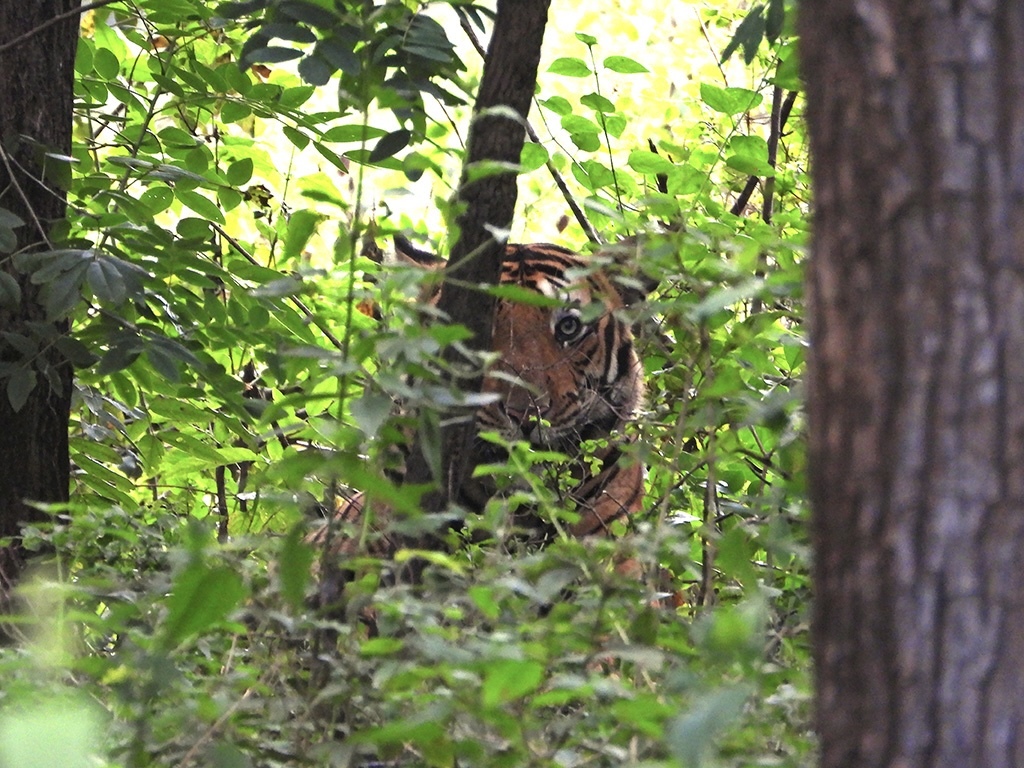
All Comments
No Comments Available